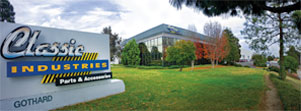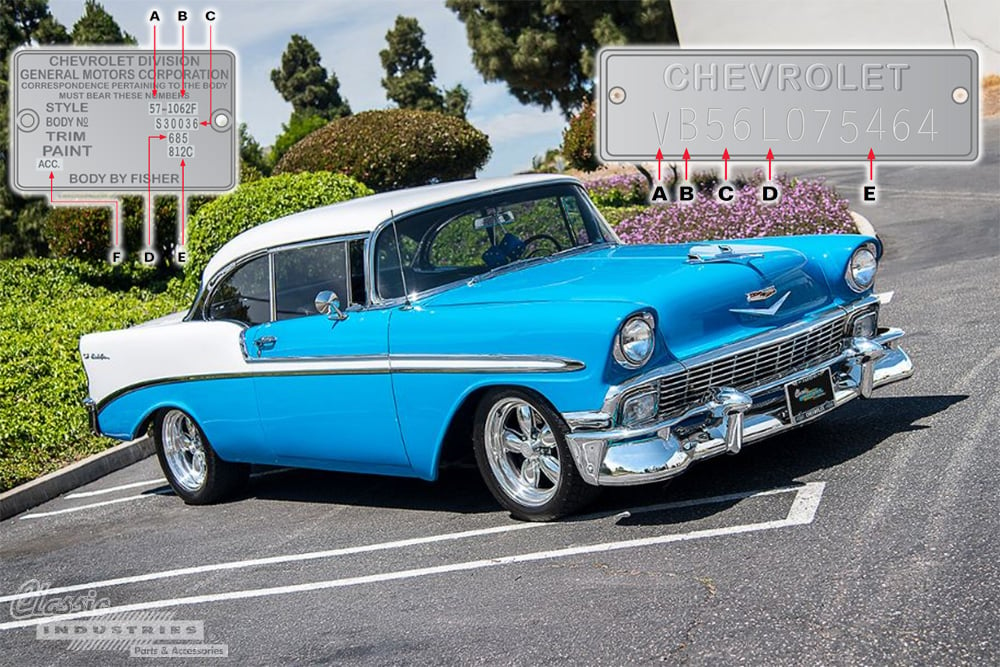
If you've ever seen a 1955-57 Chevy classic car and wondered what its original specifications were, there's one way to find out for certain: examine the VIN plate and the trim tag. These two pieces of metal were riveted onto the body of all Tri Five Chevy vehicles, and each provides some valuable information on the way they looked when they left the GM assembly line back in the 1950s. Read on to learn how to use our 1955-57 Chevy VIN decoder and trim tag decoder to find out more about your own '55-57 Chevy, or one you're thinking about buying and restoring.
Key Takeaways:
-
Tri Five Chevy Identification
- Importance of VIN plates and trim tags for 1955-57 Chevy specs.
-
Tri Five Chevy Models
- "Tri Five" nickname and included models like One-Fifty, Two-Ten, Bel Air, Nomad, and others.
-
1955-57 Chevy VIN Decoding
- Guide to VIN plate:
- V8 Model
- Series/Model
- Year
- Plant
- Production Number
- Guide to VIN plate:
-
1955-57 Chevy Trim Tag Decoding
- Trim tag details:
- Year Code
- Model Code
- Plant Code
- Interior/Exterior Codes
- Options
- Trim tag details:
-
Using Decoded Info
- Applying data for restoration and buying.
-
Restoration Resources
- Parts and accessories for Tri Five Chevys from Classic Industries; get a Classic Industries Tri-Five parts catalog.
What is a Tri Five Chevy?
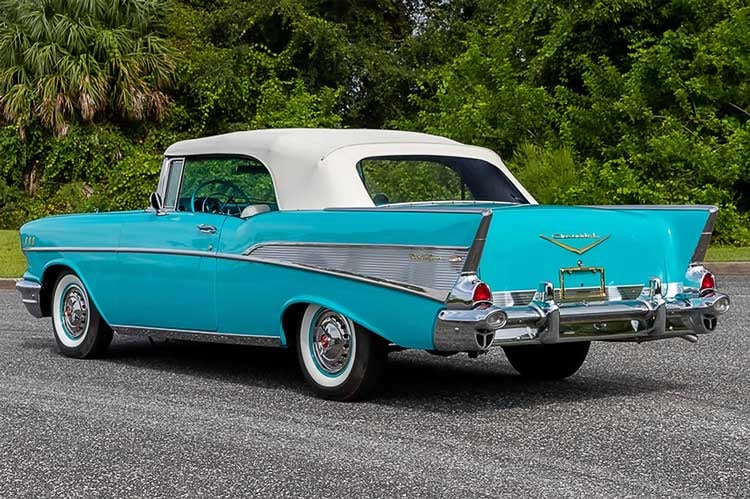
The nickname "Tri Five" refers to 1955, '56, and '57 Chevrolet cars. This includes the well-known One-Fifty, Two-Ten, Bel Air, and Nomad models, as well as lesser-known sub-models such as the Delray coupe, and Handyman, Townsman, and Beauville wagons. For more information on Tri Five Chevy year differences and body styles, read our 1955-57 Chevy Identification Guide article.
1955-57 Chevy VIN Decoder
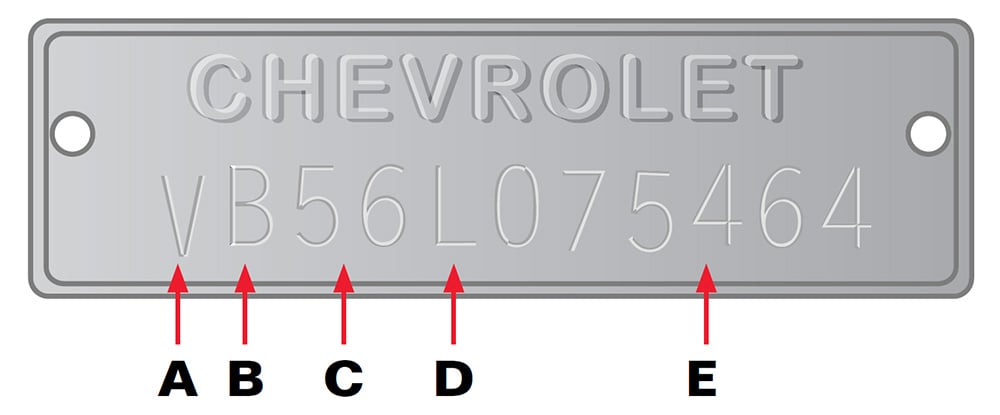
Unlike our Firebird / Trans Am VIN decoder or our Nova VIN decoder, which span multiple generations with different vehicle identification number formats, the 1955-57 Chevy VIN decoder is very simple. Just look on the left front door hinge pillar post for a VIN plate that resembles the graphic above, and use the information below to decode it.
A: V8 Model
In addition to the Series and Model Identification letter, models equipped with a V8 from the factory will contain a “V” before the Series and Model ID. Models originally equipped with a 6 cylinder engine did not feature this “V” at the beginning of the V.I.N.
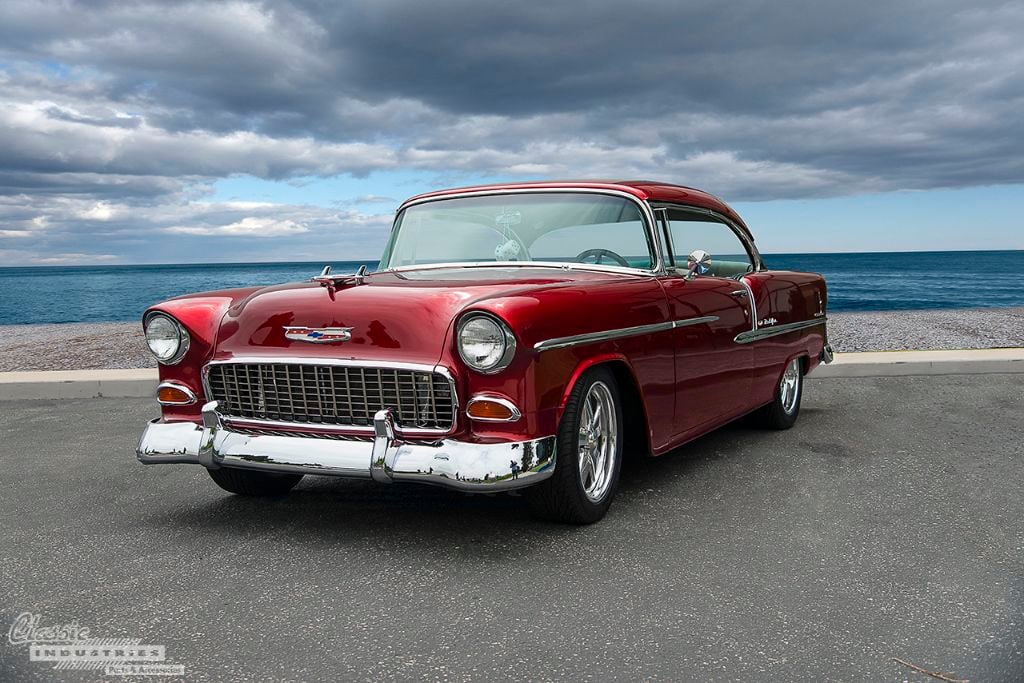
B: Series and Model
The second letter in the V.I.N. sequence is the Series and Model Identification digit. Each Series received a unique letter.
| Code | Series | Model |
| A | 1500 | 150 Models |
| B | 2100 | 210 Models (incl. Delray) |
| C | 2400 | Bel Air Models (incl. Nomad) |
| D | 1508 | Sedan Delivery |

Note: The utilitarian Sedan Delivery (photo above courtesy of Mecum Auctions) was designated under a separate VIN series, and was actually advertised as part of Chevrolet's Task Force truck line rather than its passenger car line. Unlike traditional wagons such as the Handyman, Townsman, Beauville, and Nomad — which had a split clamshell-style upper door and lower tailgate — the Sedan Delivery had a unique one-piece rear door that was hinged at the top, much like a modern hatchback.
C: Model Year
The first set of numbers in the V.I.N. sequence represents the model year of the vehicle. "55" indicates 1955, "56" indicates 1956, and "57" indicates 1957.
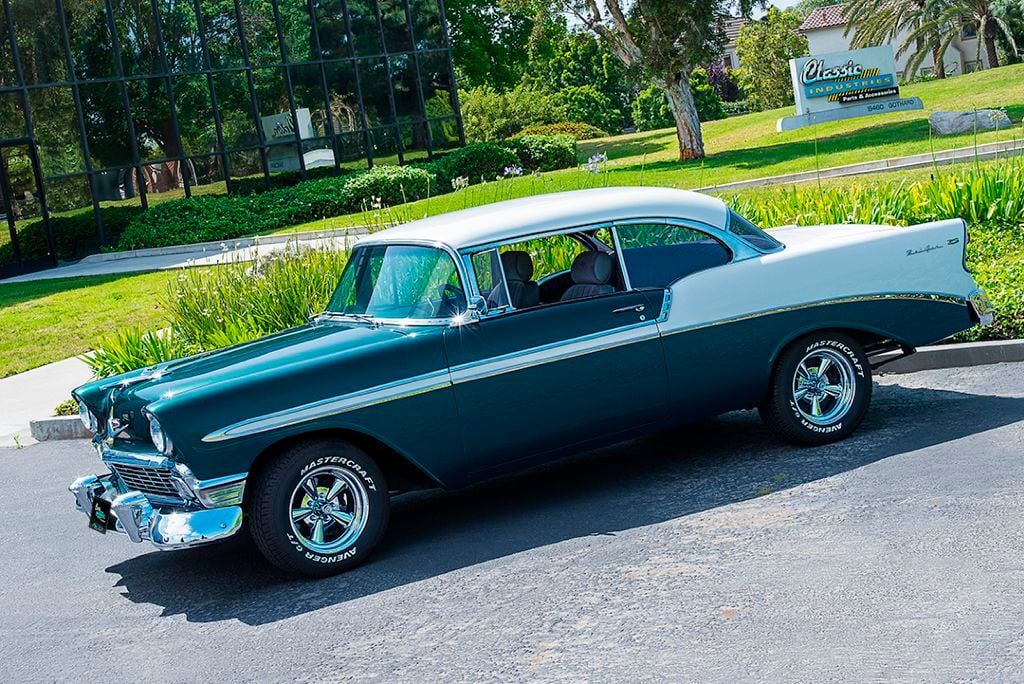
D: Assembly Plant
The final letter of the V.I.N. represents the assembly plant at which the vehicle was built. Between 1955-57, ten primary assembly plants manufactured passenger cars. Oakland, CA used the plant code “O”, which can sometimes cause confusion with the sequence number, especially in 1955-56 models where the sequence begins with a zero.
| Code | Assembly Plant |
| A | Atlanta, Georgia |
| B | Baltimore, Maryland |
| F | Flint, Michigan |
| J | Janesville, Wisconsin |
| K | Kansas City, Missouri |
| L | Los Angeles, California |
| N | Norwood, Ohio |
| O | Oakland, California |
| S | St. Louis, Missouri |
| T | Tarrytown, New York |
E: Production Number
The production number sequence represents the basic serial number given at the assembly plant. This six digit long sequence began with “001001” in 1955-56, while in 1957 the sequence began with “100001”. Each plant used their own unique sequence numbers.
1955-57 Chevy Trim Tag Decoder

The trim tag, also known as the cowl tag, is attached to the right hand side of the cowl panel under the hood. The plates represented a vehicle’s most basic body characteristics from Fisher Body, the coachworks contracted to build vehicles for Chevrolet Motor Division. The cowl tag provides invaluable information to the car’s original paint color, interior color and material, and the location of the plant at which the vehicle was built.
A: Model Year Code
As with the VIN, these two digits represent the model year of the vehicle. "55" indicates 1955, "56" indicates 1956, and "57" indicates 1957.
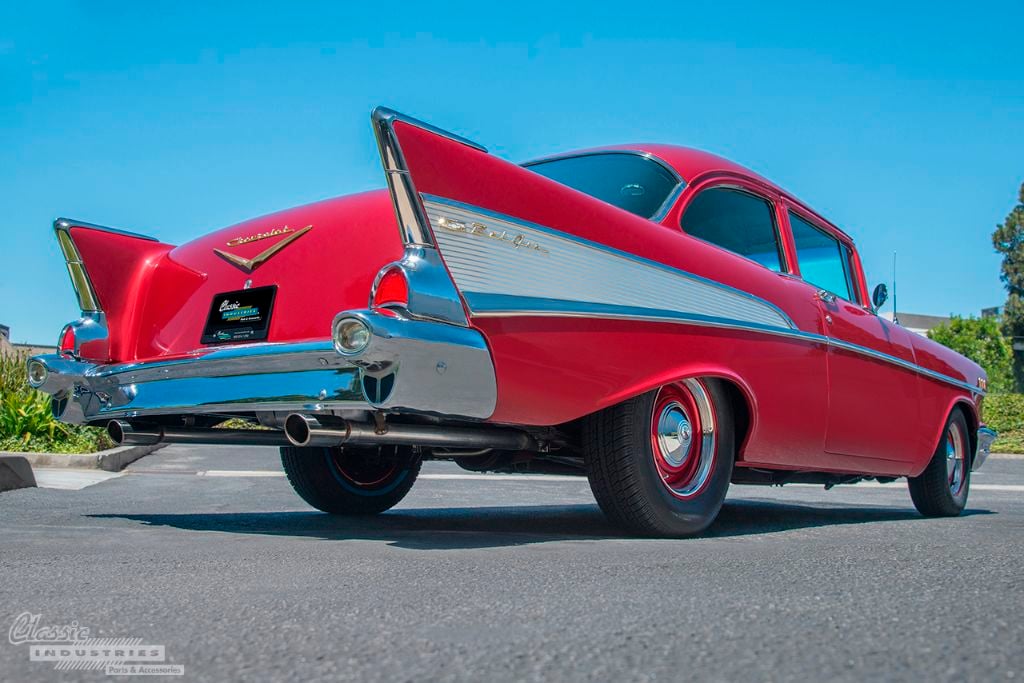
B: Model Identification Code
The second set of digits in the style number code represents the style of the vehicle’s bodywork. Within this code, the first two numbers represent the Series Identification – “10” for 210 or Bel Air, "12” indicating 150 Series. The last two numbers represent the bodywork style of the vehicle. A detailed list can be found below.
Note: Up to two letters can also be found after the four numbers. A “D” as the first letter represents a Bel Air Series model while an “F” in either location represents a station wagon model. Example: 1062DF can be identified as a Bel Air 4 door wagon.
| Code | Body Style |
| 1211 | 150 2-Door Sedan |
| 1219 | 150 4-Door Sedan |
| 1263 | 150 2-Door Wagon |
| 1271 | 150 2-Door Sedan Delivery |
| 1011 | 210 and Bel Air 2-Door Sedan |
| 1011A | 210 Del Ray Club Coupe |
| 1037 | 210 and Bel Air 2-Door Hardtop |
| 1019 | 210 and Bel Air 4-Door Sedan |
| 1039 | 210 and Bel Air 4-Door Hardtop |
| 1062 | 210 and Bel Air 4-Door Wagon |
| 1063 | 210 2-Door Wagon |
| 1064 | Bel Air Nomad 2-Door Wagon |
| 1067 | Bel Air 2-Door Convertible |
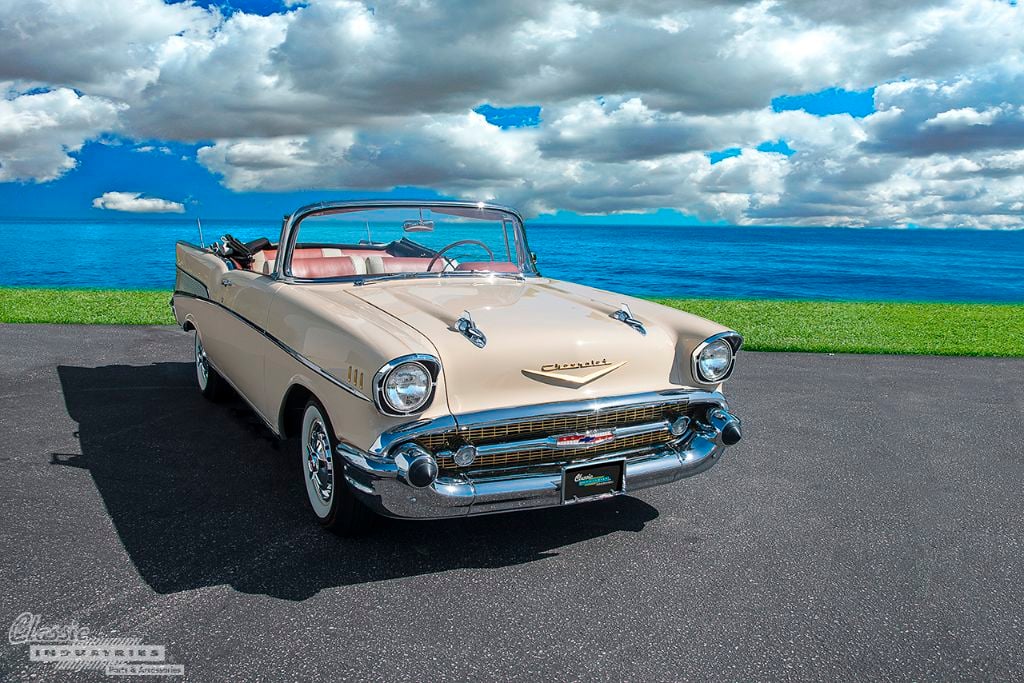
C: Assembly Plant Code
The assembly plant code is a combination of two codes, a letter representing the assembly plant location and a sequence number. The list below details the letter code. The numbers after the assembly plant code provide a sequence number indicating the specific assembly plant’s sequence or rotation number and should not be confused with the V.I.N. sequence.
| Code | Assembly Plant |
| A | Atlanta, Georgia |
| B | Baltimore, Maryland |
| F | Flint, Michigan |
| J | Janesville, Wisconsin |
| K | Kansas City, Missouri |
| L | Lansing, Michigan |
| N | Norwood, Ohio |
| O | Oakland, California |
| S | St. Louis, Missouri |
| T | Tarrytown, New York |
| VN | Van Nuys, California |
| CL | Cleveland, Ohio |
D: Interior Trim Code
This three digit number represents the interior color and materials for a given vehicle. Codes and patterns are different for each year, but color combinations may cross over.
Click here for a list of 1955-57 Chevy interior trim codes.
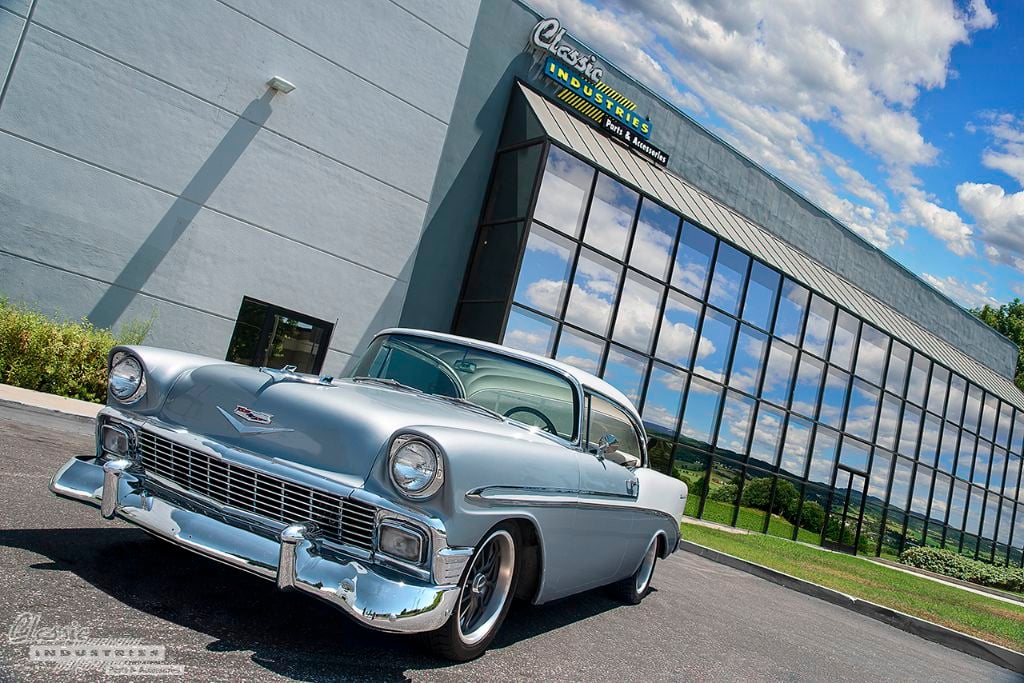
E: Paint Color Code
The paint color code represented in three numbers the exterior paint colors and their locations on the vehicle. Two-tone paint schemes were available from 1955-57 and because of this, separate codes were offered for each color combination. From 1956-57, a letter would sometimes follow the three digit code. An “A” would represent a single paint color and a “B”, “C”, “D” or “E” represented a two-tone paint scheme.
Below, you can see an example of the paint codes available in 1955. Click here for a list of all Tri Five Chevy color codes.
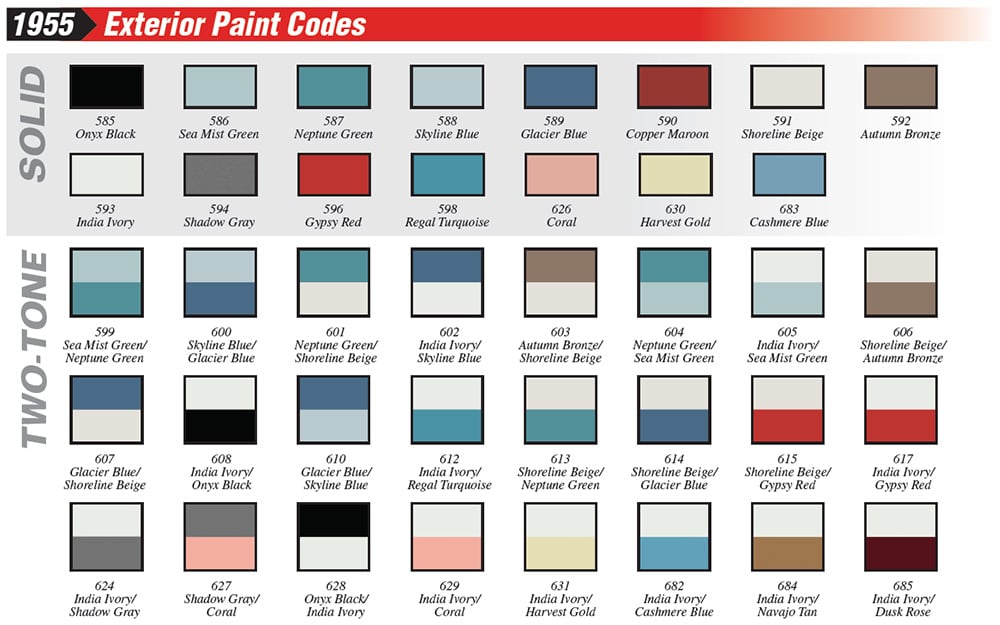
F: Vehicle Options
If a particular vehicle was to be built with optional equipment, the codes for these extras would be stamped below the exterior paint color code. However, even vehicles with options sometimes did not have a stamping on the cowl tag. Minor options were not indicated on the cowl tag. Major options, such as those on the partial list below, were included.
Click here for a complete list of 1955-57 Chevy option codes.
| Code | Vehicle Option |
| AC | Air Conditioning |
| CP | Padded Dash |
| WS | Power Windows and Seats |
| EZI | Tinted Glass |
Need 1955-57 Chevy Parts?
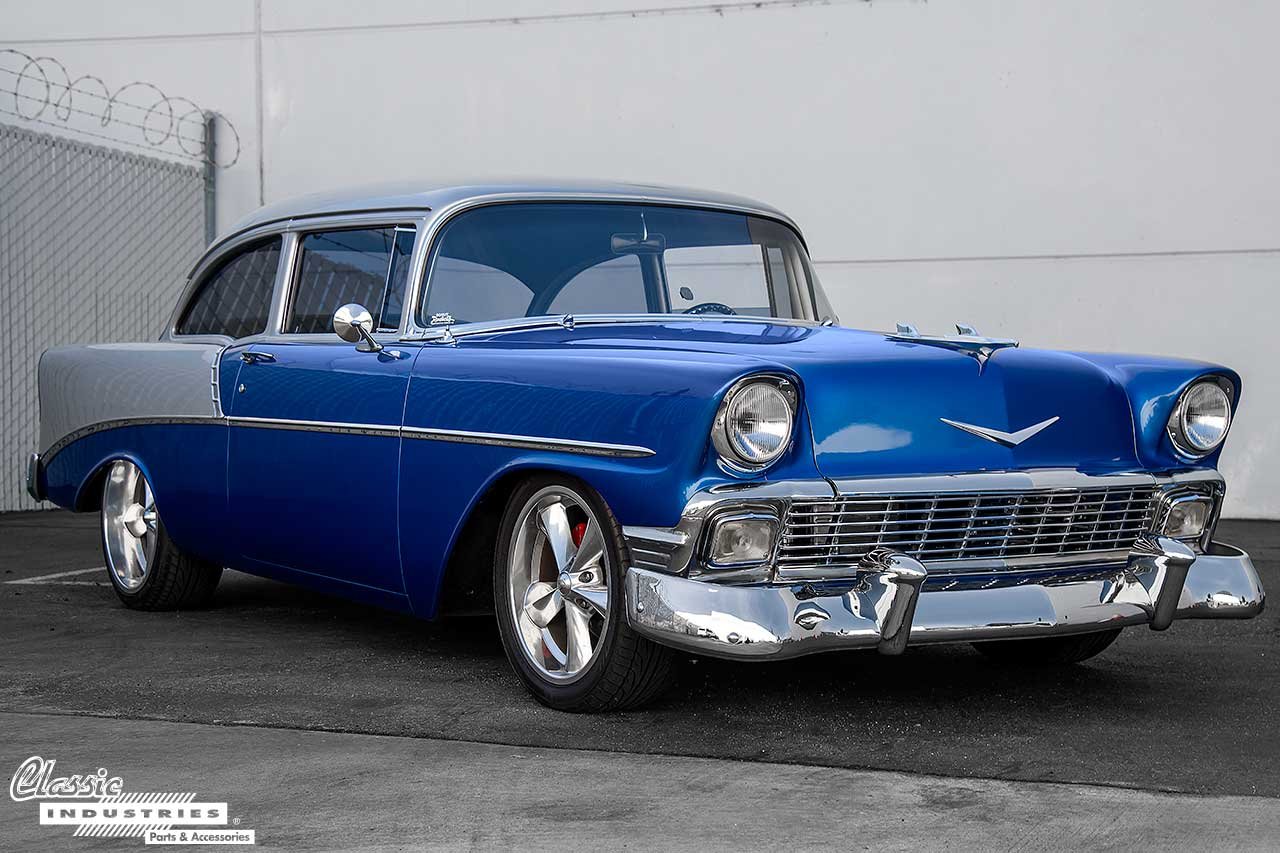
Now that you've used our 1955-57 Chevy VIN decoder and trim tag decoder to determine your car's original specifications, you may be looking for restoration parts. Classic Industries has everything you'll need to get your classic Tri-Five running smoothly and looking brand-new again. We also have a wide selection of performance parts, accessories, and maintenance items. Click the button below for a free full-color Tri-Five Chevy parts catalog.




